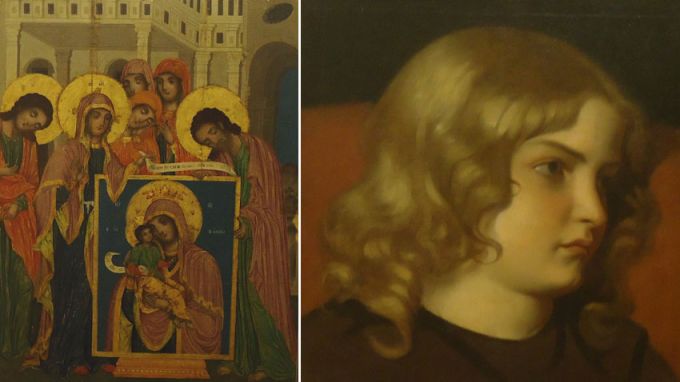 3
3
The god-inspired hand of the anonymous master who in 1259 painted the frescoes of the Boyana Church on the outskirts of Sofia recreated the faces of the saints in such a way as if their inner light cast its rays over the very end of the Middle Ages’ twilight. And if Bulgaria had not been conquered by the Ottoman hordes, it would most probably boast that in the 13th century the frescoes of a small Bulgarian church had pioneered the European Renaissance.
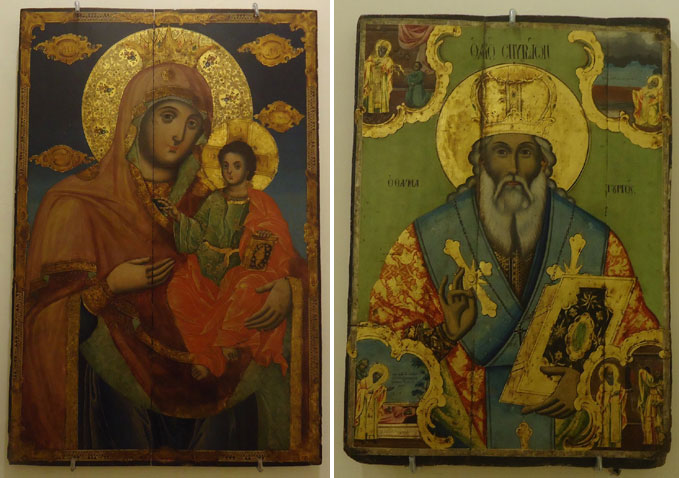 Zograf Damaskin from Elena – Holy Mother with Child
Zograf Damaskin from Elena – Holy Mother with Child
Alexander Zograf from Yambol – St. Spiridon with Script
The era of the Bulgarian National Revival combined two historical trends: a spiritual upsurge echoing the European Renaissance coupled with an economic and social-political development of the Bulgarian nation that strove for emancipation while still under the rule of the Ottoman Empire. The narrative about the Bulgarian National Revival captured in the works of icon-painters and secular artists currently illuminates the halls of the National Gallery of Art in Sofia. Though delayed – due to the Ottoman domination – with centuries, Revival art epitomizes the awoken spirit of the Bulgarian nation in its struggle for national independence and spiritual upsurge in the 18th and 19th centuries.
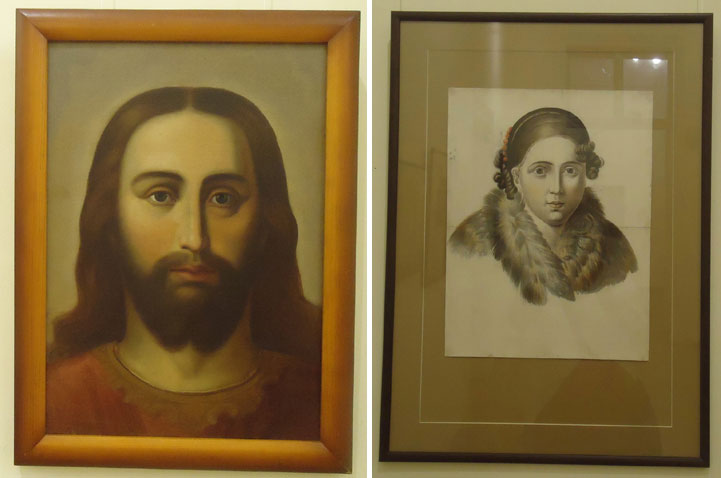 Stanislav Dospevski – Christ
Stanislav Dospevski – Christ
Zahari Zograf – Portrait of a girl
“We should not regret this delay, because Bulgaria’s National Revival was admirable, and besides it was closer in time to us so we can understand it better”, the curator of the exhibition Doroteya Sokolova says. “That era was so sophisticated and aesthetic – from cobbled streets, eaves and houses and their opulent interiors all the way to people, their clothing, art and churches. In short, the effort to renew, to pursue development in any sphere is worthy of respect. For this reason we should appreciate and love that period – with all its naivety that gives it a special color and flair.”
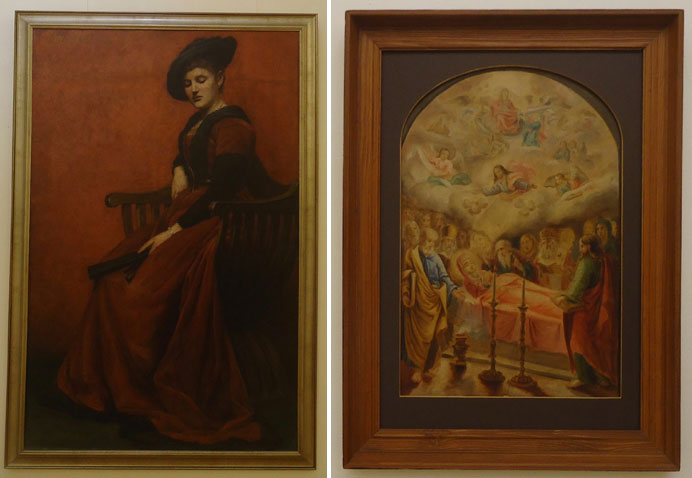 Hristo Stanchev – Portrait of a lady
Hristo Stanchev – Portrait of a lady
Hristo Tsokev – The Assumption
In the mid-18th century the founders of the family icon-painting schools in Tryavna, Bansko and Samokov received their training on Mount Athos. Once they learned the craft they would hand down knowledge and skills to their heirs and disciples and would together paint frescos and icons in churches and monasteries. The construction of new churches and the restoration of old ones were also instrumental in the expansion of the guild of painters. In this way icon-painting emerged as a prosperous craft and painters began producing genuine masterpieces.
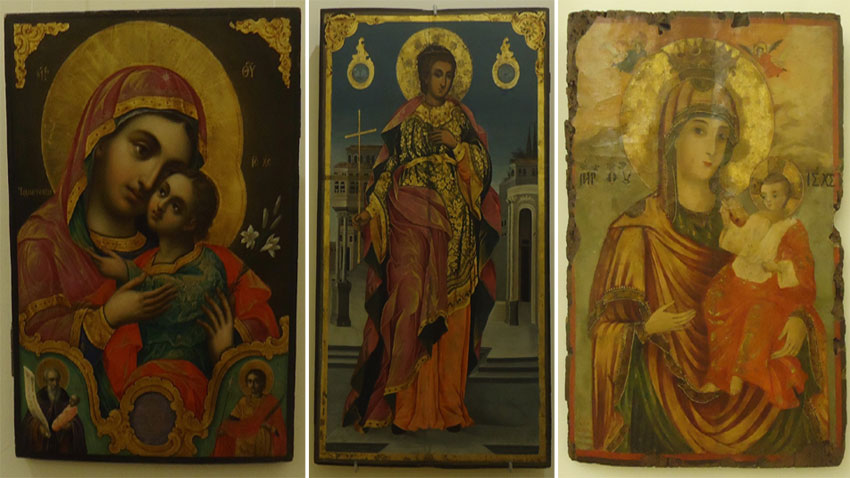
“In this exhibition we present almost all important painters – the Tryavna artists Yoanikiy papa Vitanov, papa Vitan the Younger, because there was an older generation before that; Simeon Tsonyouv, a few early representatives of the Tryavna school from the 18th century with their characteristic primitive and generalized shapes,” Doroteya Sokolova explains.
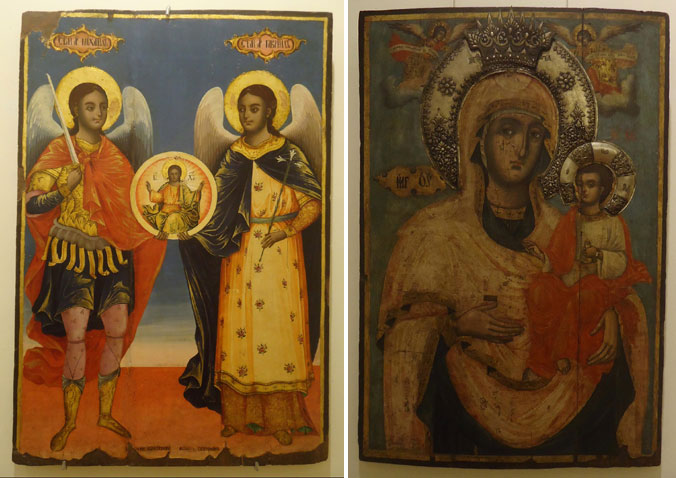 Yoanikii Papa Vitanov – Gathering of the Angels
Yoanikii Papa Vitanov – Gathering of the Angels
Papa Vitan from Tryavna - Holy Mother with Child
“Next in the display are the great Samokov painters Hristo Dimitrov and his sons Dimitar Zograf and Zahari Zograf (the foremost reformer). The last representative of the school was Stanislav Dospevski, Dimitar Zograf’s son. He graduated from the academy in St. Petersburg fulfilling the aspirations of a few generations of painters. The exhibition also shows the remarkable icon-painters from the town of Elena.”
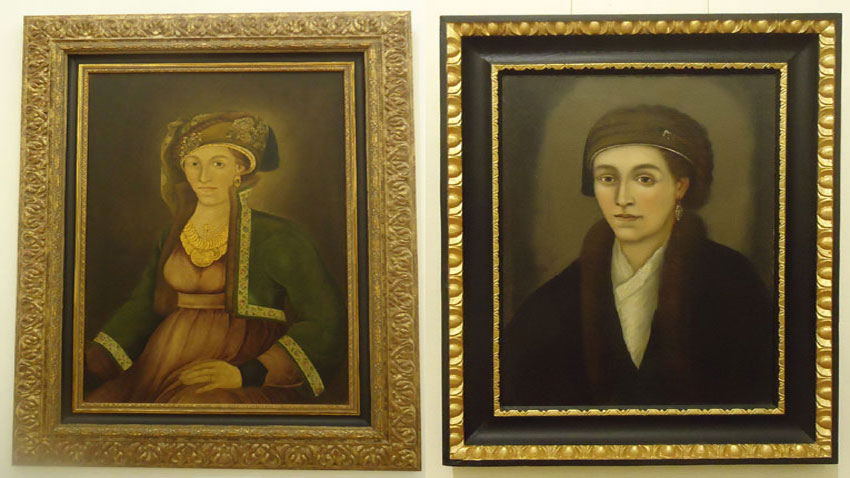
The Trayvna School later produced the early secular painters with academic degrees from European academies which they received owing to the generous donations of well-to-do Bulgarians. One of them was Ivan Dimitrov who studied with a scholarship at Ecole des beaux-arts in Paris.
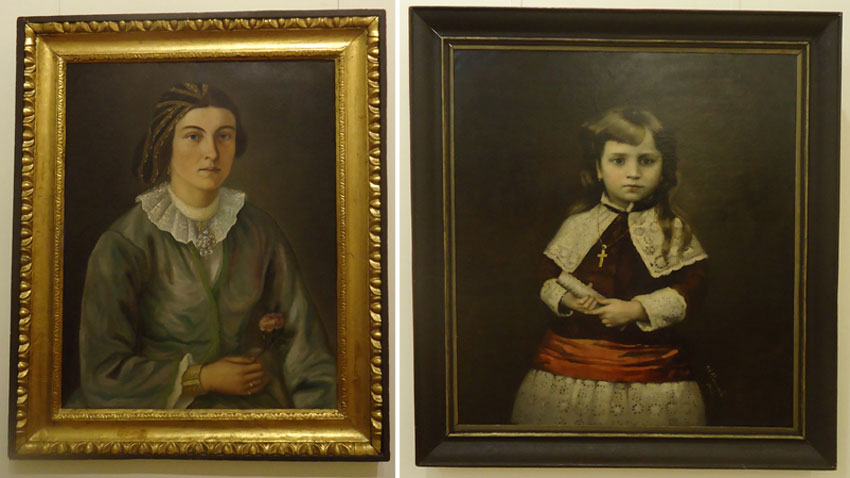
“The first who went to study abroad was Stanislav Dospevski – to St. Petersburg, and also Nikolay Pavlovich – to Vienna and Munich. They were back to Bulgaria in the mid-19th century,” the curator of the exhibition goes on to say. “Initially they painted portraits of great people of their time and then of their relatives. Dimitar Dobrovich studied in Rome where he took up a western style of painting. Hristo Tsokev was trained in Moscow with Peredvizhniki- TheWanderers /a Russian realistic school which organized road shows/. In the exhibition I have included Konstantin Velichkov, a prominent figure with a key contribution into the creation of the National Academy of Arts. He studied painting in Florence and for a while painting was his main job. He is the author of Letters from Rome, the first general history of art written by a Bulgarian.”
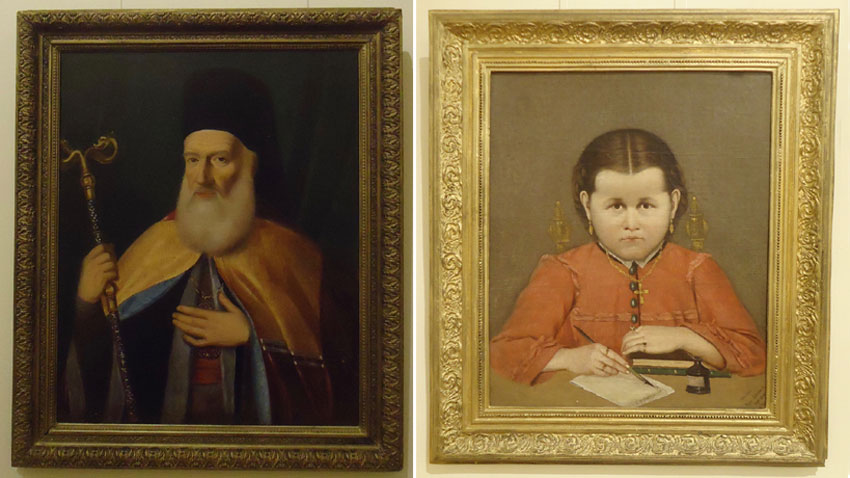
The secular painters bequeathed to us a diverse gallery with portraits of renowned leaders including Bulgaria’s national hero Vasil Levski. They worked on historical plots and reconciled the tradition of their fathers’ skills with the principles of European painting.
English Daniela Konstantinova
The ninth edition of the initiative Poetry in the Metro opens today and lasts until 23 December. The project was initiated by the Polish Cultural Institute in Sofia. It includes poems by 20 European writers. They will be displayed on panels..
Awakener/enlightener - a person who, through his actions, ideas or creative work, awakens the spirit of the people, preserves and spreads national identity, culture and education. In Bulgarian history, this term is most often associated with the period of..
For the twenty-third year, the Bansko Film Fest team will take the audience to some of the most extreme corners of the world with 75 films from 39 countries . ''All of them are premieres, and for some of them, the screenings in Bansko will be..

+359 2 9336 661
